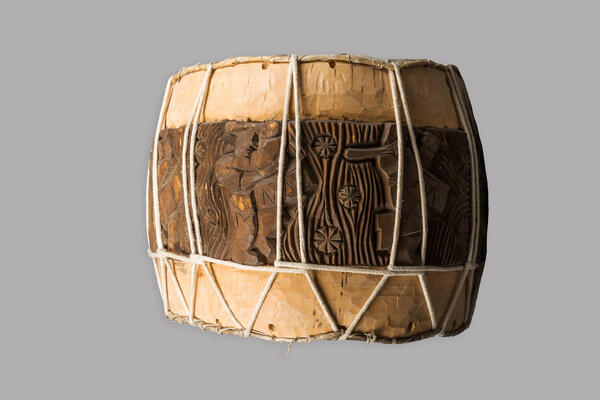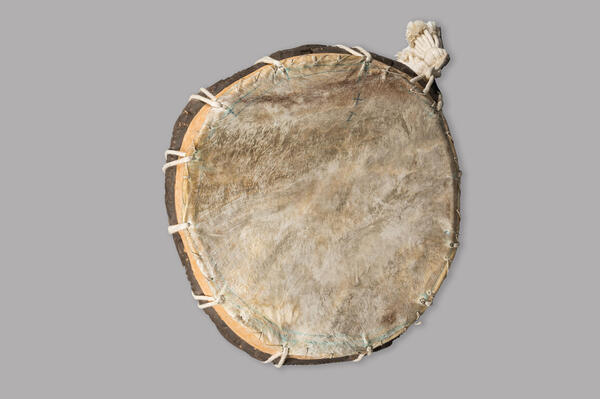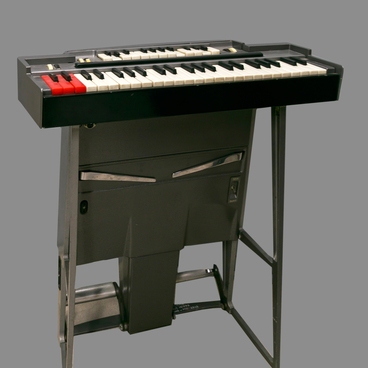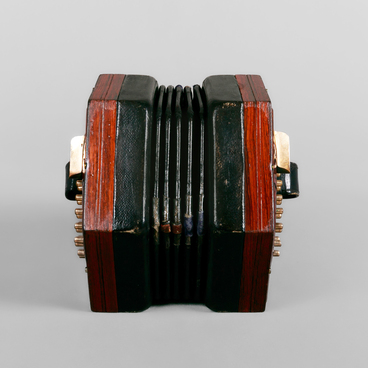The most popular membranophone in Chuvashia is the double-headed drum known as the parappan. Its cylindrical shell was usually chiseled out of wood and decorated with Chuvash floral patterns.
Two membranes made of horse or sheep skin were stretched with wooden hoops that were pulled together with ropes. The parappan was played with two skittle-shaped beaters called tokmaks. The left-hand tokmak was slightly larger.
To tune the instrument before playing, its leather membranes were sprayed with beer. As a result, the drums had a sound that was both strong and deep, and at the same time soft. The parappan was often used in combination with Chuvash bagpipes and other instruments.
These Chuvash drums were used both to send signals and to perform ritual ceremonies at festivals. The parappan was always included in the musical ensembles at fairs, Maslenitsa activities, and traditional festivals for young people.
The parappan was an integral component of any wedding. The instrument was often created specifically for the ceremony and known as the “tuy parappan, ” which means “the wedding drum.” In the areas of the Lower Chuvash, one parappan could be simultaneously played by several people using various techniques. Several drums were often played together.
In the late 20th century, the parappan was mainly used by amateur folklore groups. In 1986, the Museum of Music purchased a new parappan from the Chuvash craftsman Viktor Chernov. The instrument was produced according to the traditional design.
The drum’s shell was roughly and coarsely chiseled and decorated with stylized carved geometric patterns and figures of drummers. The drum builder decorated the beaters and the ropes of membranes with large tassels.
The future artist, craftsman, and teacher Viktor Chernov was born in 1939, in the Shigali village of the Urmarsky District, the Chuvash ASSR. In 1965, he graduated from the graphic arts department of the Chuvash State Pedagogical University.
Viktor Chernov has participated in numerous town, district, and republic-wide exhibitions. He has practiced relief carving, sculpture carving, mosaic, and painting murals. He has dedicated a lot of time to studying Chuvash national instruments. In 2008, he published a book based on his research, which was reissued in 2015.
Two membranes made of horse or sheep skin were stretched with wooden hoops that were pulled together with ropes. The parappan was played with two skittle-shaped beaters called tokmaks. The left-hand tokmak was slightly larger.
To tune the instrument before playing, its leather membranes were sprayed with beer. As a result, the drums had a sound that was both strong and deep, and at the same time soft. The parappan was often used in combination with Chuvash bagpipes and other instruments.
These Chuvash drums were used both to send signals and to perform ritual ceremonies at festivals. The parappan was always included in the musical ensembles at fairs, Maslenitsa activities, and traditional festivals for young people.
The parappan was an integral component of any wedding. The instrument was often created specifically for the ceremony and known as the “tuy parappan, ” which means “the wedding drum.” In the areas of the Lower Chuvash, one parappan could be simultaneously played by several people using various techniques. Several drums were often played together.
In the late 20th century, the parappan was mainly used by amateur folklore groups. In 1986, the Museum of Music purchased a new parappan from the Chuvash craftsman Viktor Chernov. The instrument was produced according to the traditional design.
The drum’s shell was roughly and coarsely chiseled and decorated with stylized carved geometric patterns and figures of drummers. The drum builder decorated the beaters and the ropes of membranes with large tassels.
The future artist, craftsman, and teacher Viktor Chernov was born in 1939, in the Shigali village of the Urmarsky District, the Chuvash ASSR. In 1965, he graduated from the graphic arts department of the Chuvash State Pedagogical University.
Viktor Chernov has participated in numerous town, district, and republic-wide exhibitions. He has practiced relief carving, sculpture carving, mosaic, and painting murals. He has dedicated a lot of time to studying Chuvash national instruments. In 2008, he published a book based on his research, which was reissued in 2015.






